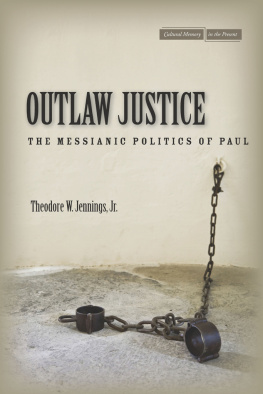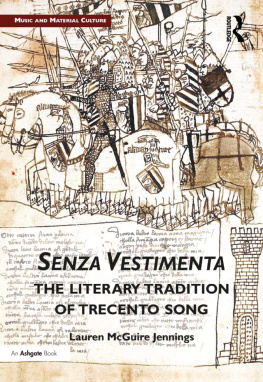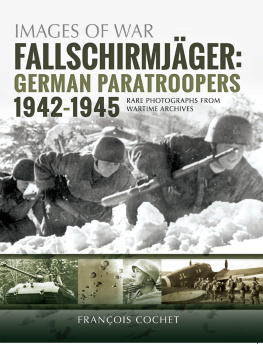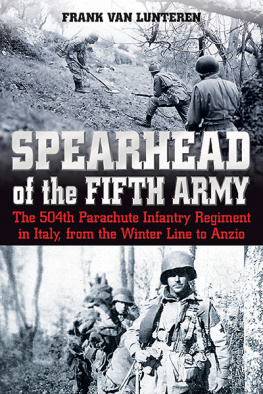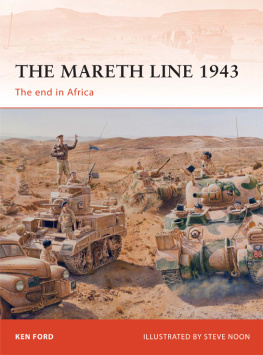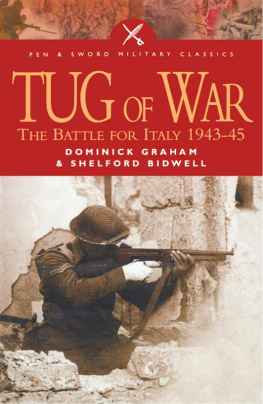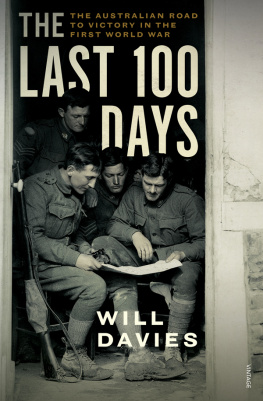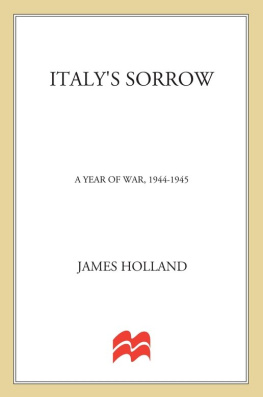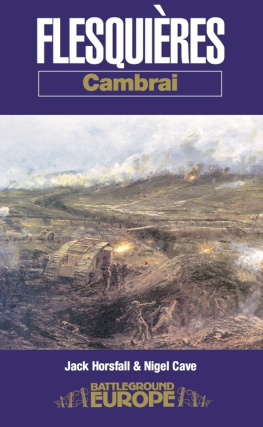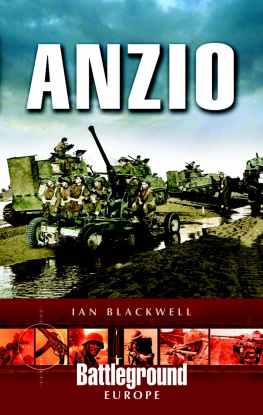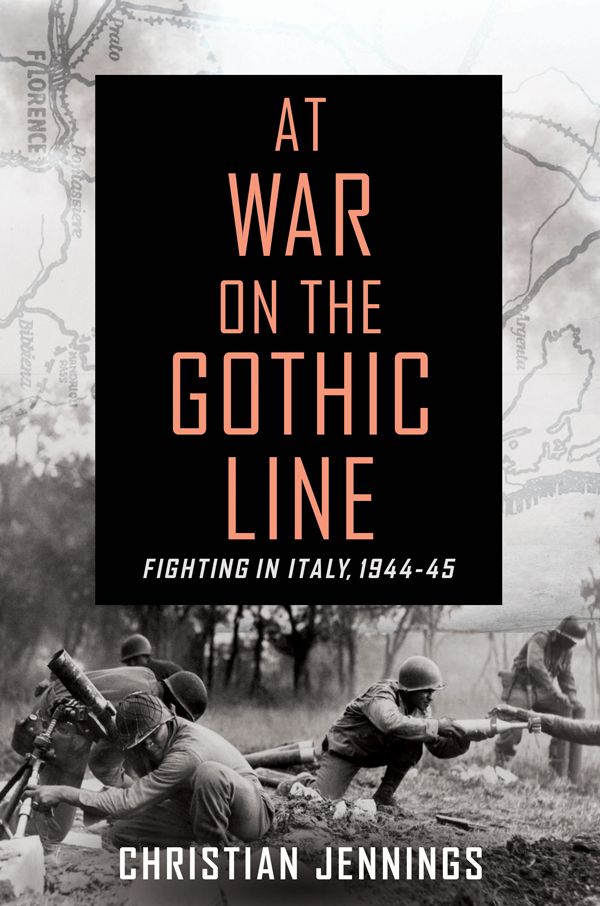Contents
Guide

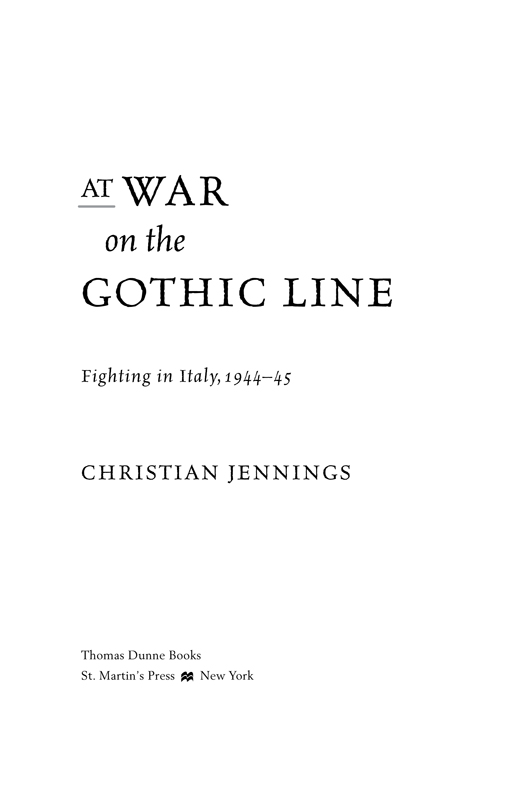
The author and publisher have provided this e-book to you for your personal use only. You may not make this e-book publicly available in any way. Copyright infringement is against the law. If you believe the copy of this e-book you are reading infringes on the authors copyright, please notify the publisher at:
us.macmillanusa.com/piracy.
History with its flickering lamp stumbles along the trail of the past, trying to reconstruct its scenes, to revive its echoes, and kindle with pale gleams the passion of former days.
WINSTON CHURCHILL
Con disavvantaggio grande si fa la guerra con chi non ha che perdere.
(We fight to great disadvantage when we fight with those who have nothing to lose.)
FRANCESCO GUICCIARDINI, STORIA DITALIA, 1561
Turin, Italy, June 2015
I was six, I remember, when my father first gave me advice on the best way to attach two loaded thirty-round magazines on a .45 Thompson submachine gun. We were sitting in a railway carriage together in West Sussex, in the south of England, on the way to join my mother and my siblings for a days outing by the sea. I remember three things very distinctly about that moment: First, my father was smoking, through his war-wounded fingers, a Players No. 6 filterless. Second, the blue cigarette smoke in the railway carriage batted and swirled in the warm air, buffering against the dust motes raised from the hot Southern Region Railways upholstery on which we were sitting. Third, it was 1968, and I had recently been reading an article in a Sunday newsmagazine about the war in Vietnam, containing striking images of U.S. Marines fighting in the citadel of Hue, taken by the photographer Don McCullin. What, I asked my eternally patient father, would he have taken to Hue if he had had to go that day? A Tommy Gun or a Sten? And why was the former so much better?
Drawing on his cigarette, my father talked me through the benefits of the Thompson. Attaching two magazines together was easy, he said, and gave you double the amount of available ammunition. You took a strong rubber band, he said, and attached the clips together with one of them upside down. It was a technique, he said, that he and his men had been taught by American paratroopers from the 101st Airborne Division, with whom his wartime British cavalry unit, the 15th/19th Kings Royal Hussars, had operated in Holland in autumn 1944. The 15th/19th and the 101st had briefly fought together in the autumn of 1944 during and after Operation Market Garden outside Eindhoven in Holland, where my father had learned his skills with rubber bands and submachine-gun magazines.
Like so many of his generation, my father didnt talk very much about the operational specifics of the war. His tank unit had arrived in Normandy in August 1944, as armored reinforcements for British cavalry units decimated in the fighting around the town of Caen. His regiments enemy was a mixture of panzergrenadiers and SS tank units in Tigers and Panthers, an enemy that he found brave, arrogant, ruthless, and tactically brilliant.
As children, we had heard about the physical exhaustion of the tank advance from Normandy to the Seine, and across Belgium into Holland. He told of being so exhausted after a day in combat in France that he fell asleep in the pouring rain, lying facedown in a waterlogged plowed field, bivouacked next to his tank. He told the ubiquitous and probably apocryphal story of the young British cavalry subaltern, an Oxford graduate, who had disembarked from his tank in a Normandy orchard, exhausted after an afternoon of combat against the SS. The young officer, face stained with smoke and oil, had loosened on his battle dress blouse the khaki ties that officers wore in those days, often even in battle. A wry comment had come from across the orchard from an aristocratic squadron commander, admonishing the subaltern for this atrocious display of sartorial laxity. Christ Church? Never a very dressy college, clearly.
My father had told of using the horns of a Friesian cow, killed by shellfire in a Dutch orchard, as props on which to rest his binoculars during a reconnaissance mission of a German position, and of watching Typhoon fighter-bombers strafing German tanks. His tank had been the first in the regiment to knock out a German King Tiger, my father directing fire by lying on the outside of the tank, on the engine cowling. His binoculars observed the fall of the twelve shells fired at it, of which three hit the armored giant, setting it on fire. The moments of tragedy were many. In late August, his unit engaged some three hundred Germans, dug in behind stooks of corn. Half of them turned out to be Poles, conscripted on the German side. The enemy surrendered and white flags went up, but in the dying, confused moments of the firefight, moving forward to help a wounded colleague, a close friend of my fathers was mortally wounded and died that evening.
But our father never really talked about his time in combat. We all knew hed been in the wars, as they say, from his badly burned face and head, to his disfigured hands clasped in an eternal clench where the tendons had retracted when he was burned. It made it easier, he said later, rather drily, to roll up his own cigarettes. Wed seen his Military Cross, but we never knew what exactly had happened that day in Holland in October 1944. It was something he kept to himself and a few former colleagues. A fellow Hussars officer who had fought with him in Holland said fifty years afterward that what my father had done had completely changed the course of that days battle.
We grew up in the 1960s. Half the adults around us seemed to have fought in the Second World War. A bearded exRoyal Navy lieutenant commander taught us mathematics at prep school; he could always be relied upon to be diverted from quadratic equations and Pythagoras by myself or a classmate asking him to recount, just once more, the events of the night his Motor Torpedo Boat had taken on a German E-boat in the English Channel. The story always ended the same way, with the description of a German Kriegsmarine bosun being riddled with British 20mm cannon fire at close range, the drum of heavy automatic fire hammered out for us on the school desk by the lieutenant commander with the blackboard eraser. Meanwhile, unbeknownst to him, one of our classmates was covertly looking up the answers to that days mathematics test questions in a textbook hidden under a sweater on his lap.
Then there were my mothers male friends who had, in the vernacular, a good war. First among these was Lewis Bobby Hodges, an RAF bomber pilot who went on to fly Special Operations Executive agents in and out of occupied France in a Lysander. Hodges ended the war in one piece, as a squadron leader with a Distinguished Service Order and bar to his name, a brace of Distinguished Flying Crosses, and the French Croix de Guerre and Legion dHonneur. The latter was awarded for his bravery and flying skill in whisking two future presidents of France, Vincent Auriol and Franois Mitterand, out of the country to attend a meeting with De Gaulle in London. As children, we were encouraged by our mother to eat as many carrots as possiblehadnt that made the eyesight of Group Captain John Cats Eyes Cunningham so acute? Enabling the British RAF night-fighter ace to shoot down twenty German aircraft? It was, of course, radar, but we didnt know then, so we ate carrots at any given opportunity.




